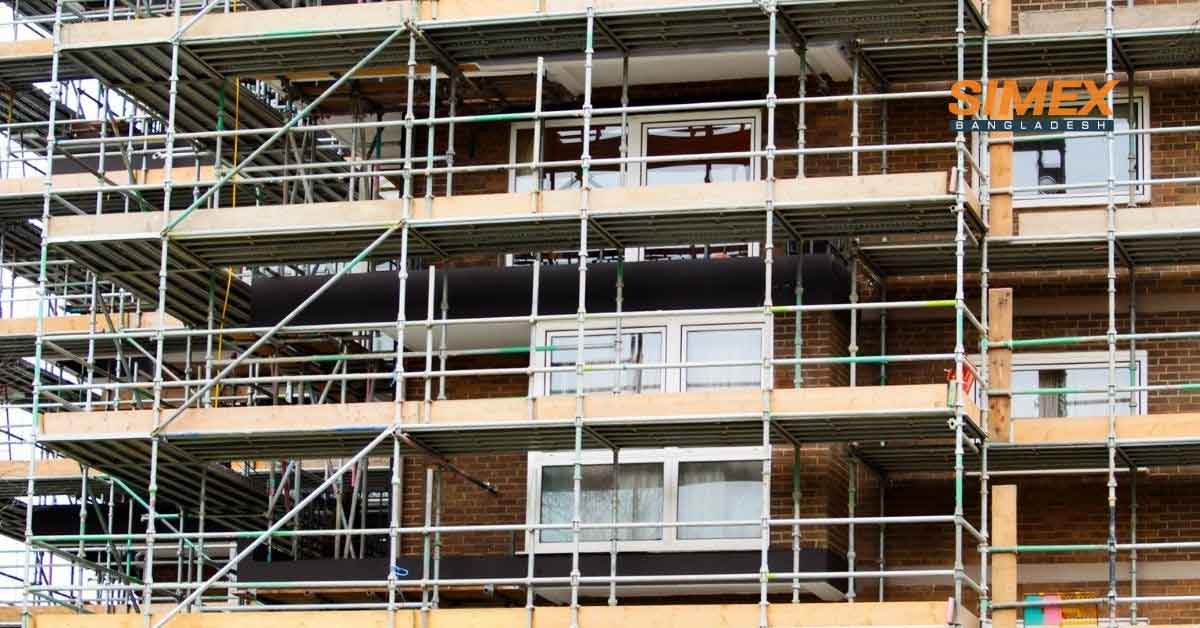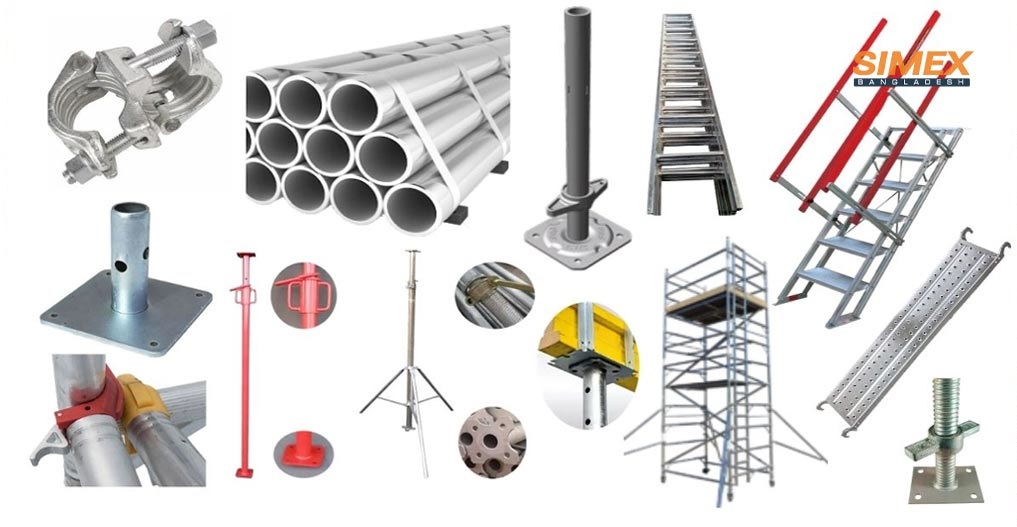
Different Types of Scaffolding in Construction Sites In 2022
Let's See The Topics
Scaffolding is a necessary part of practically all construction projects and has been used since the time the primary structures were constructed. Regularly expected to get access to structures at stature during construction, scaffolding can fill a wide range of purposes and needs. Different types of scaffolding tools are uses in different purposes.
Scaffolding is a transitory structure used by workgroups during building work. It’s used to hoist and support individuals and building materials during the construction, maintenance, and fix of buildings, structures, and different designs.
Here and there, scaffolding is used to help workers and their tools, different occasions they’re expected to support significant loads from building materials, like bricks, blocks, plaster, or cast-in-place concrete, which is known as ‘shoring’ as opposed to ‘scaffolding’. All of the scaffolding supplier company should supply different types of scaffolding.
The most well-known scaffolding materials for scaffolding tubes themselves are steel and aluminum, with wood once in a while being used for limited scope projects. Wood is rather generally used for the scaffold board to help the weight of workers and materials when on the project.
Non-conductive scaffolding materials are additionally used for explicit activities where the scaffolding may be near electrical wiring.
It goes under safety guidelines on building construction sites, and standards have been endorsed for its design and use. For example; when an individual is at risk to fall from 2 meters in height, a guardrail ought to be given to a height of 1 meter and furthermore a toe board at any rate 200 mm over the stage.
Scaffolding is built around the outskirts of the building, and in multistory buildings, it must be gathered to enormous heights. As around 35 to 40 percent of all the accidents that happen in building construction sites are because of defective scaffolding and ensuing fall of people from heights, severe management ought to be taken in setting up scaffolding as per standard practices.

8 Different Types of Scaffolding
There have multiple different types of scaffolding in construction site. Here we will discuss about the top 8 different types of scaffolding and how they are being used at the construction sites to support the workforce.
1. Trestle Scaffolding:
The trestle scaffolding is upheld on portable ladders or mounts in trestle scaffolding. It is used around a height of 5m and is typically used for work inside the room like fixes, canvases, and in like manner. This is used for light work and is typically convenient. It comprises of two ladders with the top finishes consolidated by boards so an individual can chip away at this stage.
It comprises working stages upheld on versatile ladders and no principles or putlogs. Hence, this can be effectively moved to start with one point then onto the next. Trestle scaffolding is generally used for painting works or minor fixes inside the rooms.
2. Steel Scaffolding:
This scaffolding type resembles a bricklayer’s scaffolding; however, the bamboo or timber materials are supplanted with steel. It can also frequently appear as a block layer’s scaffolding when openings are made in the divider surface to help one finish the scaffolding.
It is additionally named rounded or tubular scaffolding because of the hollow nature of the steel metals used. Still containers of 1.5-inch to 2.5-inch measurement are used rather than wood and bamboo boards. The metals are attached using some uncommon type of steel couples rather than rope lashing. The affixing system here comprises prop nuts that hold singular lines, screws, nuts, and washers just as wedge and clasps.
One of the disadvantages is that it’s more costly. In addition, it requires more skilled labor and furthermore needs repainting occasionally to keep its actual color and protect it from damage.
3. Patented Scaffolding:
Patented scaffoldings are also made from steel; however, they are fitted with special couplings and frames etc. These are readymade scaffoldings that are obtainable on the market. Working platform is set on the brackets that are adjustable to the required level in this type of scaffolding.
Protected scaffoldings are accessible readymade to hire or purchase and are secured with a locking arrangement that varies from cylinder and coupler scaffolding. Easy to assemble and disassemble.
4. Suspended Scaffolding:
Suspended Scaffolding is used for an assortment of fix function work just as painting. Mostly used in painting as the stage is customizable and adjustable to wanted length on various occasions.
This comprises a functioning stage suspended from railing dividers or the rooftop using ropes, chains, or wires that can be brought or raised down to the ultimate level. It’s normally used for maintenance jobs like artwork.
Suspended Scaffolding is made using rope or binds attached to the stage for the construction worker, which is then hanged from the rooftop with the height changed at the desired level.
This is particularly so when the height is in excess of 30 meters. Suspended scaffolds are of three sorts—fixed, operated by pulleys, and worked by winches.
5. Cantilever Scaffolding:
Also referred to as needle scaffolding, cantilever scaffolding comprises of guidelines that are upheld on progression of needles taken out through openings in the divider. It tends to be single or twofold sort. Single type cantilever scaffolding comprises of guidelines supported on a progression of needles. The double type cantilever scaffolding, then again, has needles and projecting shafts swaggered into the floor through the openings.
This scaffolding type is used when there is no hard firm ground to help the standard; for example, when you need to construction work done is completed on occupied roads. What’s more, in situations where the construction works is done at incredible heights on a multi-storied building.
6. Single Scaffolding:
Also referred to as or Brick Layers Scaffolding, Single framework is frequently used in block workmanship works. It’s anything but a single structure of guidelines, records, and put logs that are briefly built corresponding to the wall being worked at, it’s set up roughly 1.2 meters from the wall.
Guidelines, a succession of vertical individuals made of timber or bamboo, are fixed immovably into the ground corresponding to the wall under construction. They are put at around 2 to 2.5 meters’ span, 1.2 meters from the wall.
For scaffolding put on tall height, supports are normally fixed for extra help and support keep up the strength of the great scaffolding. Supports are fitted cross corner to corner with the norms with the use of rope lashing.
7. Double Scaffolding:
Double scaffolding is additionally referred to as mason’s scaffolding, essentially in light of the fact that it is broadly used for stone masonry works. This scaffolding type is for the most part more grounded and offers better help for construction works in when contrasted with the block layer’s (single) scaffolding.
Double scaffolding varies from the single scaffolding in that it highlights two columns of norms isolated by records for better help. Notice that a single line of the standard is typically fixed to the ground on account of the block layer’s scaffolding. This is considered more fragile, subsequently, settling on double scaffolding a more mainstream decision for some, construction jobs.
8. Kwikstage Scaffolding:
The last however not the most un-in the rundown is the Kwikstage Scaffolding framework. This Scaffolding is created from hardwearing stirred steel and is appreciated for its simple establishment. Easy to gather just as deteriorate, it is used for both of all shapes and sizes construction works. Kwikstage Scaffolding can undoubtedly supplant a standard scaffolding frameworks and give a more secure and solid stage to work. Made using strong and safe interlocking scaffolding, the protected Kwikstage secluded scaffolding is adjustable to any desired height.
Kwikstage scaffolding is intended to fill different needs. Made from galvanized steel, it can sculpt itself to the shape of the structure being built. Kwikstage scaffolding is usually used for precise structures, angular, buildings or directional bridges.
